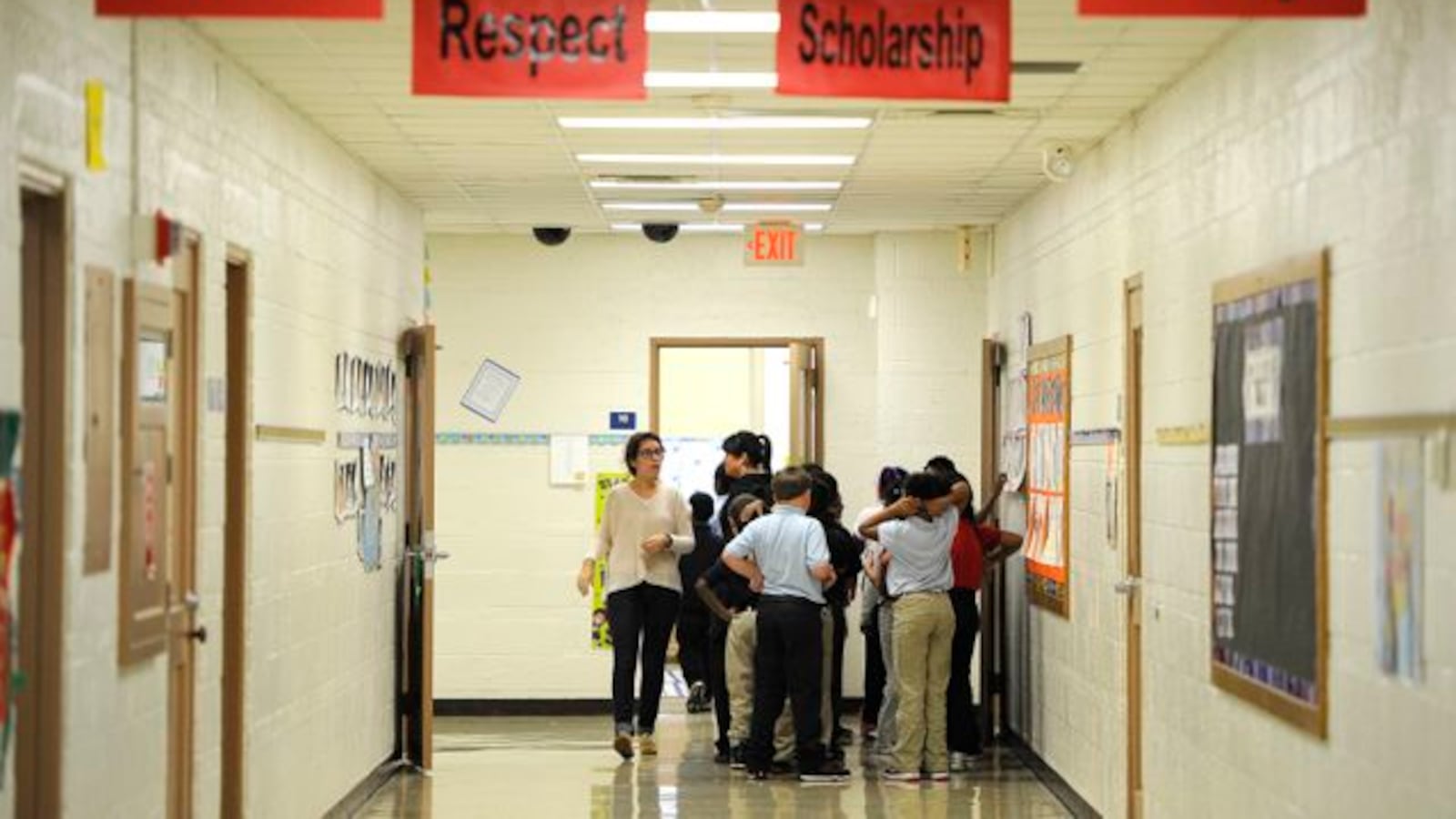New state guidelines for collecting data about school discipline could help shed more light on why schools are suspending and expelling students — especially the disproportionately high rate for black students.
The state has added new categories of offenses for schools to choose from beginning in 2016 when reporting their discipline data in an effort to make the information more specific. Until now, the most-used category for why a student was suspended or expelled was listed as “other,” a designation that doesn’t tell school or state officials anything about why the incident happened. The next most-used reasons were “defiance” and “fighting.”
Two of the new categories that officials hope will be most helpful are “sexual misconduct” and “technology misuse,” which could include distracting cellphone use in class or more serious offenses, like having pornography on a phone or tablet.
Michelle Tubbs, assistant director of data collection for the education department, said at the meeting of the state’s School Discipline and Climate subcommittee on Thursday that the changes would lead to better, less ambiguous reporting from schools.
“After meeting with Russ Skiba and Superintendent (Glenda) Ritz … we actually have completely re-done the expulsion and suspension collection,” Tubbs said. “So hopefully we will start seeing ‘other’ coming down in numbers because we are giving schools more categories to pick from.”
Skiba, director of Indiana University’s The Equity Project, which studies disparities in discipline, said 31 percent of suspensions and expulsions for black students are categorized as “other,” with most of the rest being for fairly insignificant offenses, such as defiance, attendance or profanity. Only about 5 percent are from battery, drug-related or violent incidents.
So more frequently, students are suspended and expelled for minor offenses, Skiba said. Major offenses are pretty rare.
In all instances of suspension and expulsion, black students are disproportionately represented, Skiba said. That means that though black students make up just 12 percent of Indiana students, they make up almost 40 percent of suspensions and expulsions. According to data from The Equity Project, black students are suspended two to three times more often than other students across the country.
Federal data from the 2011-12 school year reported similar findings, with black children as the targets of discipline more often than white children, both nationally and in Indianapolis. Too many instances of discipline, especially ones that result in students missing class time, can lead to lower graduation rates and more students getting arrested for crimes, federal officials said in a statement last year.
Although he’s glad to see an effort to be more specific in discipline reporting to get at what might be causing the disparity, Skiba said he thinks more schools should be surveyed about how they define “other.” He’s concerned that just adding two more categories might not make enough of a difference in the numbers.
“We don’t want to survey every school in the state, but maybe there’s some way of getting a representative sample of schools,” he said. “My guess is that there are a lot more reasons out there for ‘other’ than just this.”
The state outlines 25 total categories a school can use to report a discipline-related offense, but districts themselves can add more for internal record-keeping, Tubbs said. When she worked in Lawrence Township, she said the district had more than 100 categories.
“You have battery — well, is it battery against another student, or is it battery against an adult?” she said. “At Lawrence, they’d split it, but to the state, battery is battery.”
Overall, Skiba and Tubbs said it was important for schools to understand how to use data to make improvements. Sometimes administrators just need help with the basics, like formatting or even knowing where to find data.
Those changes might require time and work, Skiba said, but they’re needed to ensure inequalities among students don’t get overlooked.
“It becomes very difficult to really see their disproportionality, much less do anything about it,” Skiba said. “That’s going to be a process. It’s going to take folks a long time to get there.”

